Wetterhoun Dogs: Treasures of the Netherlands
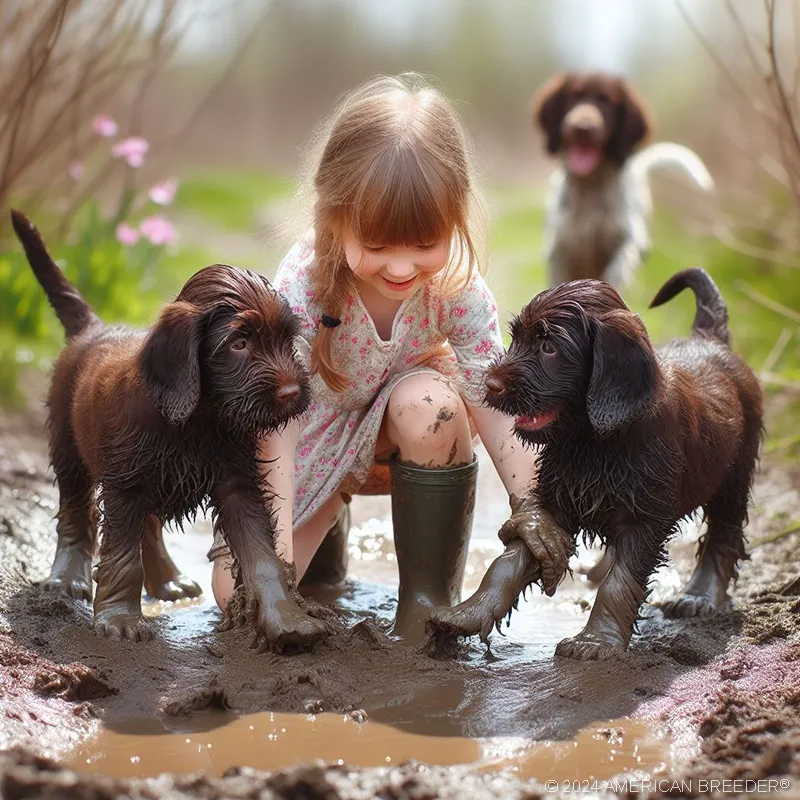 Introduction to the Wetterhoun Dog
Introduction to the Wetterhoun Dog
The Wetterhoun, often referred to as the "Otterhoun," is a remarkable breed known for its unique appearance and versatile skills. Their origins trace back to the Friesland region of the Netherlands, where they played a vital role as a multipurpose working dog. One of the distinctive features of the Wetterhoun is their waterproof coat, which equipped them for various tasks in wet and challenging terrains.
This breed's history is steeped in dedication and utility. Originally bred to assist hunters by tracking otters and other game in the wetlands of Friesland, the Wetterhoun's tracking abilities were invaluable. Their robust build and determination made them the perfect choice for this demanding task. Over time, they became more than hunting partners; they became cherished companions for families in the region.
Wetterhouns also gained recognition for their skills as watchdogs. Their loyalty and protective nature made them effective guardians of both property and loved ones. This protective instinct is still evident in modern Wetterhouns, making them excellent family dogs.
Understanding the Wetterhoun's Appearance
The Wetterhoun is a medium-sized breed with a strong and sturdy build. Their distinctive appearance sets them apart from other breeds. A striking feature is their waterproof double coat, which consists of a dense, curly outer coat and a softer undercoat. This unique coat allows them to stay dry even when working in water, making them exceptional waterfowl hunters.
Their heads are broad and expressive, with dark, almond-shaped eyes that exude intelligence and curiosity. The breed's ears are floppy and set relatively low, framing their faces charmingly. Their tails are usually docked, further emphasizing their distinctive silhouette.
In terms of size, male Wetterhouns typically stand between 21 to 24 inches (53 to 61 cm) at the shoulder, while females are slightly smaller, ranging from 20 to 22 inches (51 to 56 cm). This breed's weight can vary, with males weighing between 45 to 55 pounds (20 to 25 kg) and females ranging from 35 to 45 pounds (16 to 20 kg).
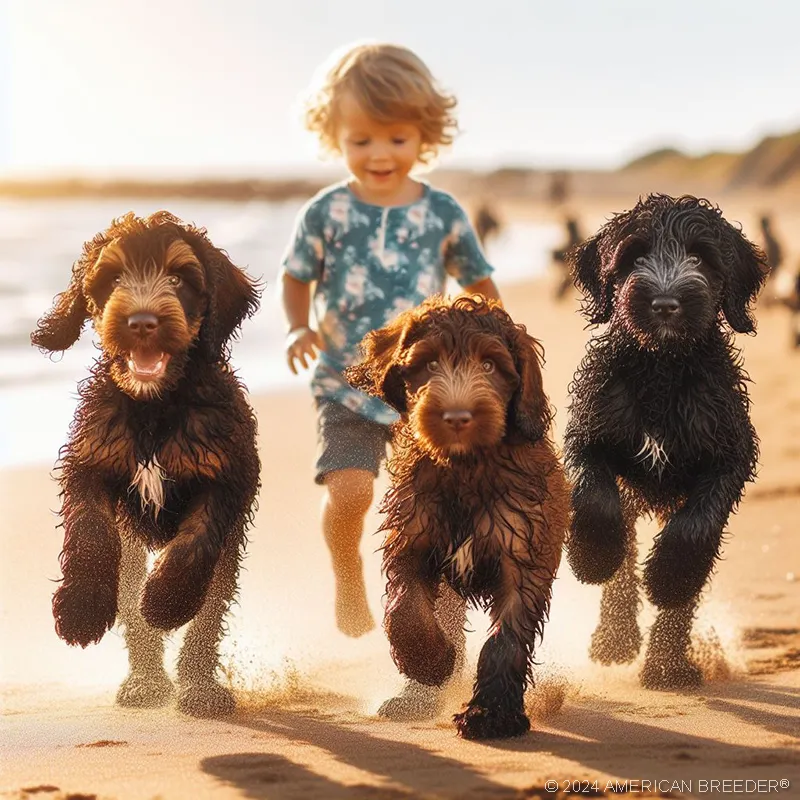 The Wetterhoun's Temperament
The Wetterhoun's Temperament
The Wetterhoun's temperament is a testament to their versatility and loyalty. They are known for their affectionate and loving nature, making them excellent family pets. They often form strong bonds with their human companions and thrive on being part of a close-knit family.
While their protective instincts make them great watchdogs, they are not typically aggressive. Instead, they are alert and cautious, making them excellent at discerning potential threats. Their loyalty and protectiveness extend to children, and they often become gentle playmates and guardians for kids in the family.
One aspect of the Wetterhoun's temperament that potential owners should be aware of is their independence. These dogs are intelligent and self-reliant, which can sometimes translate into stubbornness. They require consistent training and boundaries from an early age to ensure they grow into well-behaved adults. Early socialization is also crucial to help them get along with other pets and dogs.
Training and Exercise Needs
Training a Wetterhoun requires a balance of firmness and positive reinforcement. They are highly intelligent dogs, but their independent nature can lead to occasional stubbornness. Consistent, reward-based training methods work best with this breed. Early socialization is essential to ensure they grow up to be well-adjusted dogs that get along with other animals and people.
Exercise is a vital part of a Wetterhoun's routine. These dogs have plenty of energy to burn, and regular physical activity is crucial to their well-being. Daily walks, playtime, and opportunities to run in a secure, fenced area are essential. They also enjoy swimming, which is an excellent way to keep them both physically and mentally stimulated.
One fascinating aspect of the Wetterhoun is their love for retrieving. Many individuals of this breed have a strong desire to fetch objects, and this can be incorporated into their exercise routine. It's an excellent way to engage their minds and keep them active.
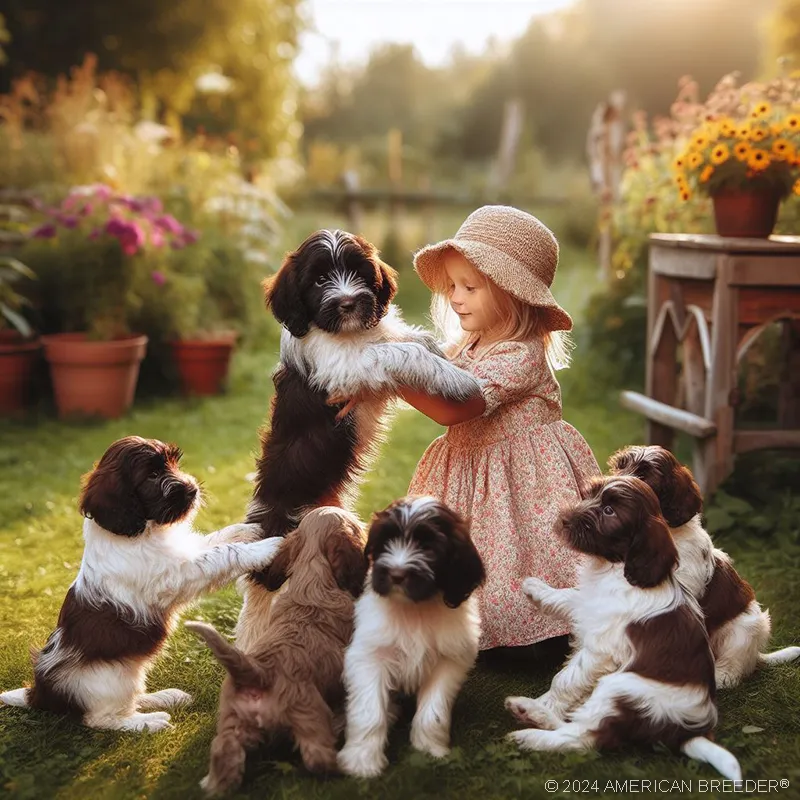 Grooming and Health Care
Grooming and Health Care
Grooming a Wetterhoun can be a bit more involved due to their unique coat. Regular brushing helps prevent matting and tangling, and occasional trimming may be necessary to maintain their appearance. Their ears should also be checked and cleaned regularly to prevent infections.
In terms of health care, the Wetterhoun is generally a robust breed. However, like all dogs, they can be prone to certain genetic conditions. These may include hip dysplasia and eye problems, so regular veterinary check-ups are essential to catch and address any issues early.
Additionally, because of their waterproof coat, Wetterhouns are susceptible to skin problems if not dried thoroughly after getting wet. After swimming or working in water, it's important to dry them off completely, paying special attention to their ears and the folds of their skin.
Socialization, Compatibility, and Living Conditions
The Wetterhoun is known for being a family-oriented breed, and they generally get along well with children. Their protective instincts often make them excellent playmates for kids, and they form strong bonds with their human family members.
When it comes to other pets, early socialization is essential. While they can get along with other dogs and animals, it's important to introduce them to new friends gradually and positively reinforce good behavior. With proper socialization, they can coexist peacefully with other pets in the household.
In terms of living conditions, the Wetterhoun is adaptable to various environments, but they thrive in homes with access to outdoor spaces. A securely fenced yard is ideal, as it provides them with a safe area to exercise and explore. They can adapt to both urban and rural settings as long as their exercise and mental stimulation needs are met.
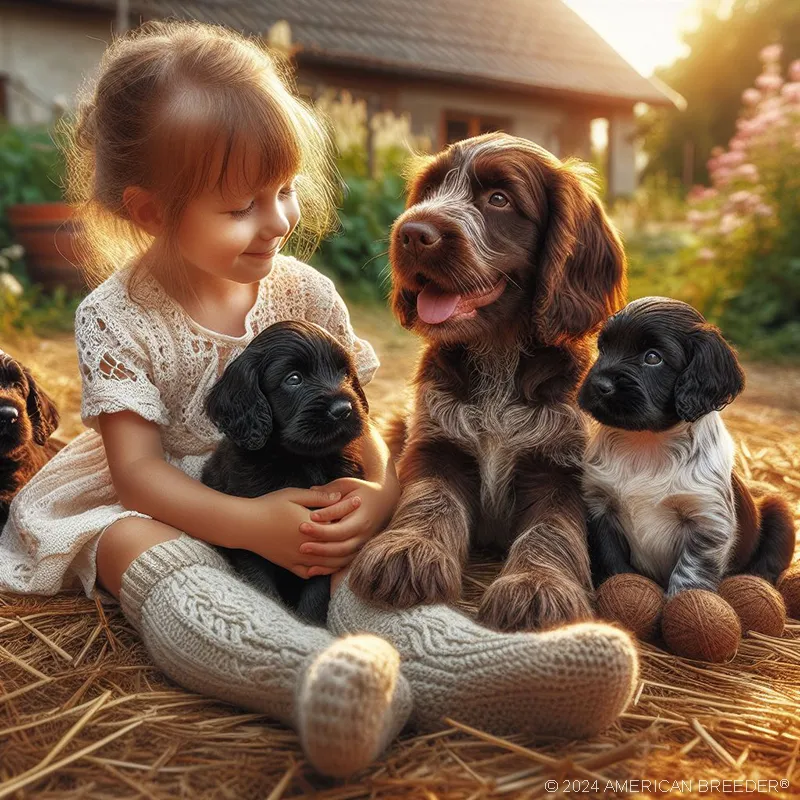 Training and Obedience
Training and Obedience
Training a Wetterhoun can be a rewarding experience, but it's important to approach it with patience and consistency. These dogs are intelligent and eager to please but can also display an independent streak.
Obedience training is essential, and starting early is advisable. Wetterhouns respond well to positive reinforcement techniques such as treats and praise. Keep training sessions engaging and varied to prevent boredom. Basic commands like sit, stay, and recall are crucial for their safety and your peace of mind.
Additionally, it's important to provide mental stimulation for your Wetterhoun. Puzzle toys, interactive games, and tasks that engage their problem-solving abilities can help prevent boredom and potential behavioral issues.
Financial Planning and Legal Responsibilities
Bringing a Wetterhoun into your life involves financial planning beyond the initial adoption or purchase cost. Consider ongoing expenses such as high-quality dog food, grooming supplies, regular vet visits, and potential emergencies. Planning for these costs ensures that your Wetterhoun receives the best care throughout their life.
Legal responsibilities as a dog owner vary by location but may include licensing, leash laws, and vaccination requirements. Understanding and complying with these regulations is essential for responsible ownership and ensures the safety and well-being of your dog and your community.
Resources and Support
As a Wetterhoun owner, you're not alone in your journey. There are various resources and sources of support available to help you provide the best care for your beloved companion.
 Breed Clubs: Consider joining a breed-specific club or association dedicated to Wetterhouns. These organizations often offer valuable resources, including breed information, health guidelines, and events that can help you connect with other Wetterhoun enthusiasts.
Breed Clubs: Consider joining a breed-specific club or association dedicated to Wetterhouns. These organizations often offer valuable resources, including breed information, health guidelines, and events that can help you connect with other Wetterhoun enthusiasts.
Veterinary Care: Establish a relationship with a trusted veterinarian who has experience with the breed. They can provide tailored advice on healthcare, vaccinations, and preventative measures.
Professional Trainers: If you encounter training challenges or wish to explore advanced training options, seeking the expertise of a professional dog trainer with experience in working with Wetterhouns can be highly beneficial.
Online Communities: There are online forums, social media groups, and websites dedicated to dog lovers and Wetterhoun enthusiasts. These platforms are excellent for sharing experiences, asking questions, and accessing a wealth of collective knowledge.
Books and Publications: Look for books, magazines, and publications that specifically focus on Wetterhouns or dog care in general. These resources can provide in-depth insights and advice on various aspects of ownership.
Local Dog Clubs: Explore local dog clubs and training facilities in your area. They often host events, classes, and gatherings where you can connect with other dog owners and receive guidance.
Rescue Organizations: If you're considering adopting a Wetterhoun, rescue organizations specializing in the breed can be an excellent option. They often provide valuable information and support during the adoption process.
Conclusion
 In conclusion, the Wetterhoun Dog is a unique and versatile breed with a rich history and remarkable characteristics. Their origins as otter hunters in the wetlands of Friesland have shaped them into loyal, protective, and loving companions.
In conclusion, the Wetterhoun Dog is a unique and versatile breed with a rich history and remarkable characteristics. Their origins as otter hunters in the wetlands of Friesland have shaped them into loyal, protective, and loving companions.
Understanding their distinctive appearance, temperament, and care requirements is essential for providing them with a fulfilling and happy life. While they have an independent streak, consistent training and early socialization can help mold them into well-behaved family members.
Grooming, healthcare, and financial planning are vital aspects of responsible ownership, ensuring that your Wetterhoun receives the best care throughout their life. Remember that they thrive in environments where they have access to outdoor spaces and can engage in regular exercise and mental stimulation.
By tapping into the wealth of resources and support available, you can embark on a rewarding journey as a Wetterhoun owner. Whether you're drawn to their unique appearance, their protective nature, or their intelligence, the Wetterhoun is sure to become a cherished member of your family, bringing joy and companionship for years to come.
Wetterhoun Dog Quick Reference Guide
Breed Background: Origin: Netherlands | Breed Purpose: Otter Hunting | AKC Class: Foundation Stock Service | Year Recognized by AKC: Not AKC recognized
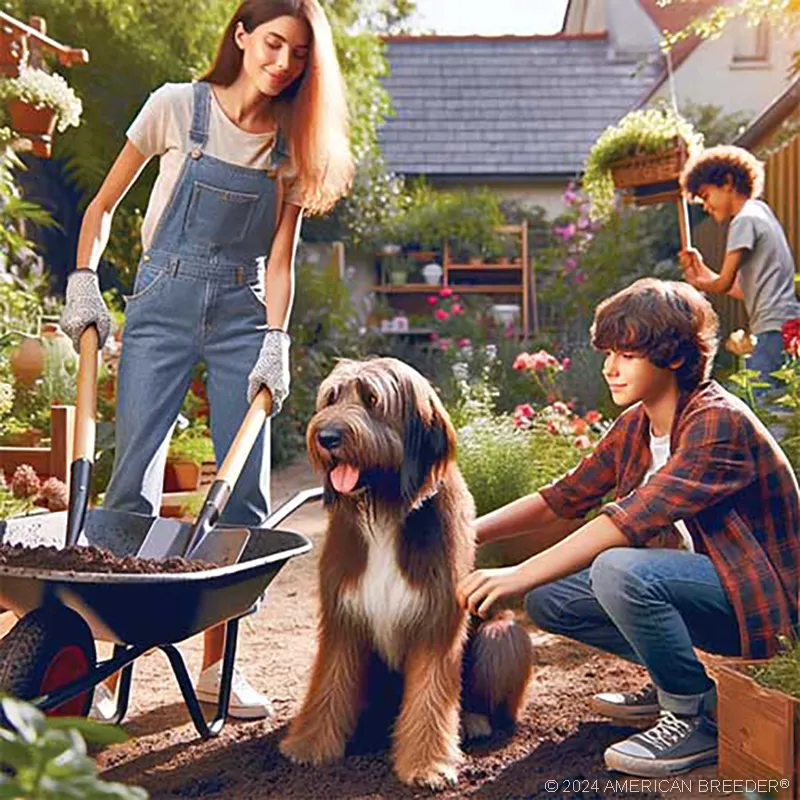 Appearance: Size: Medium | Weight: 55-77 pounds | Coat Type: Dense, Waterproof Double Coat | Colors & Patterns: Black, Liver, or Black & White, Liver & White | Distinctive Features: Webbed Feet, Curled Tail
Appearance: Size: Medium | Weight: 55-77 pounds | Coat Type: Dense, Waterproof Double Coat | Colors & Patterns: Black, Liver, or Black & White, Liver & White | Distinctive Features: Webbed Feet, Curled Tail
Temperament: Energy Level: Moderate | Loyalty: High | Friendliness to Pets: Moderate | Friendliness to Strangers: Reserved | Trainability: Moderate | Playfulness: Moderate | Frequent Barker: Low | Chase Instincts: High | Sense of Smell: Excellent | Drive to Hunt: High
Health & Care: Health Issues: Hip Dysplasia, Epilepsy, Hypothyroidism | Lifespan: 12-14 years | Grooming Difficulty: Moderate | Exercise Needs: High
Socialization: Interaction with Children: Good with supervision | Interaction with Pets: Moderate, early socialization important | Interaction with Strangers: Reserved | Elderly Compatibility: Suitable with active elderly owners | Ease of Training: Moderate
Suitable Living Arrangements: Apartment: No | House: Yes | Rural Area: Yes | Yard Size Requirements: Medium to Large Yard
Training & Obedience: Trainability: Moderate (3/5) | Intelligence: High (4/5) | Obedience: Moderate (3/5) | Problem-Solving: Moderate (3/5) | Easily Stimulated: Moderate (3/5) | Focus Level: Moderate (3/5) | Easily Distracted: Moderate (3/5)
Financial Planning: Typical Price Range: Moderate to High | Initial Expenses: Moderate (puppy, vaccinations, supplies) | Ongoing Annual Expenses: Moderate (food, grooming, vet visits)
Breeding: Reproductive Maturity: Around 8-12 months | Litter Frequency: Typically once a year | Litter Size: 4-8 puppies | Stud Cost: Moderate to High | Breeding Challenges: Maintaining genetic diversity, rare breed status
Did You Enjoy this Article? Share it and Help Us Spread the Word!
If you found this article helpful, we'd appreciate it if you could share it with your friends or link to it from your website, blog, or group! You can also use the convenient social share tabs on the left side of the screen to instantly share this page to your social media feed. For more ways to support and promote the American Breeder Community, visit our Share & Promote Together page for social media posts and memes you can copy and share. Your support means the world to us!
Disclaimer: The information provided in this article is for general informational purposes only and does not constitute legal, medical, financial, or professional advice. While we strive for accuracy, we make no representations or warranties regarding the completeness, accuracy, reliability, or suitability of the information. Please consult with a professional before making decisions based on the content provided. American Breeder Inc. assumes no responsibility for any errors or omissions or for the results obtained from the use of this information.
